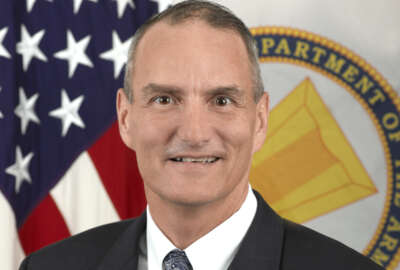

This discussion with Hillery Hunter of IBM and Stephanie Chiras of Red Hat is part of Federal News Network's DoD Cloud Exchange.
Not so many years ago, Defense Department agencies pondered a future contracts and cloud projects. Now, DoD IT practitioners are asking not whether there’s a future in the cloud, but what the cloud of the future will look like.
“From the perspective of something like the DoD, it’s really important to do long range planning and have a five- and 10-year vision for where things you need to go,” Hillery Hunter, vice president and chief technology officer for IBM Cloud said during Federal News Network’s DoD Cloud Exchange.
Hunter said use of open source software and open principles generally will become more widespread in future cloud projects. And, of course greater security and data protection. A third element of future clouds is what Hunter called confidence, meaning clouds that are ready for future technologies such as quantum computing and still-to-come encryption techniques.
That all translates into making sound cloud provider choices right now, added Stephanie Chiras, the senior vice president and general manager for Red Hat Enterprise Linux.
She underscored the open source imperative, which she described as a “grounding foundation that delivers what you need today, but also preserves your right to choose and have that flexibility that you’ll need tomorrow.”
Chiras said the open source community forms an ecosystem for innovation. The community uses standards, integration and application programming interface management “through the partnerships, through multiple public clouds, and how with what you have deployed back at the data center.” She said a goal of Defense cloud projects should be the ability to use traditional workloads along with cloud native workloads, “and adapt and adjust as you go.”
In this presentation for the DoD Cloud Exchange, both Chiras and Hunter emphasized that open source development and best lead to a total service model for applications and other computing resources in the cloud. The As-a-Service model in turn gives DoD greater flexibility and agility to respond to ever-changing requirements.
Copyright © 2025 Federal News Network. All rights reserved. This website is not intended for users located within the European Economic Area.
Tom Temin is host of the Federal Drive and has been providing insight on federal technology and management issues for more than 30 years.
Follow @tteminWFED


